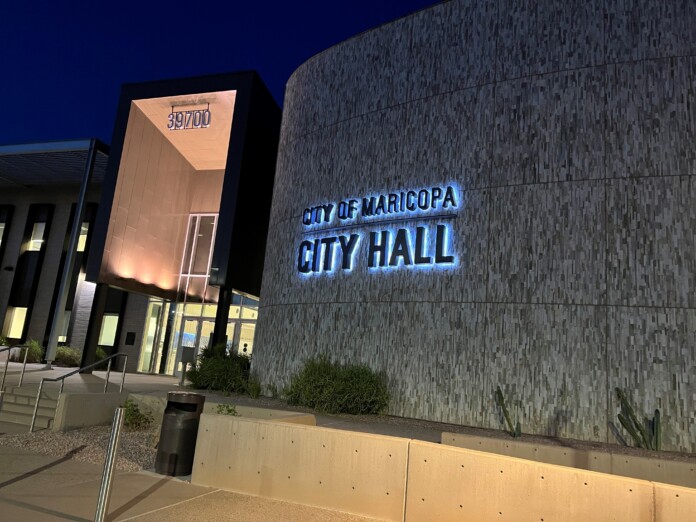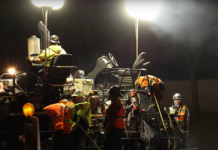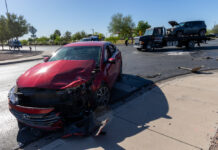First in a series examining the city’s budget
Maricopa not only is among Arizona’s fastest-growing cities but also among the fastest-growing in the country. With all of those new people comes the need for infrastructure to support them.
Some Maricopans, who have expressed that city infrastructure is inadequate – especially regarding traffic – for today’s population, much less after the homes and apartments approved and pending swell the population to six figures in coming years, may be relieved to learn that the city is addressing that.
As we begin the new year, InMaricopa begins a series of stories examining Maricopa’s budget and expenditures for infrastructure. We will look at how much the city is spending, how it is spending and whether taxpayers are getting their money’s worth.
This initial story provides an overview of the city’s primary spending category: capital improvement projects, or CIPs. These are infrastructure projects for streets, utilities, parks, facilities and other necessities for a city approaching 70,000 residents.
When the budget was proposed last spring, City Manager Rick Horst outlined in a letter to City Council his vision for the coming fiscal year, and the tag line the city would use for the year: Maricopa Elevated. Now midway through the fiscal year, that tag line provides insight into Horst’s spending philosophy.
“This year’s tag line is a reflection of all the people, past and present, who have come here to see a richer, fuller life; to seek freedom and peace; to seek opportunity and livability; and to let the prospect of the place shape their own independent aspirations,” Horst said in the document. “Let us give more and expect more as we seek to be one of the premier cities in Arizona.”
None of those things come cheap.
Maricopa has budgeted capital expenditures and general-fund operating expenses of $190 million for the 2022-23 fiscal year. Of that, $128.8 million, or 67.8%, is ticketed for capital improvement projects. Within the overall CIP budget, nearly three-quarters – $93,391,574 – is designated for engineering and development projects.
The largest project by far for the current fiscal year is Phase I of the Sonoran Desert Parkway, a multi-phase project that eventually will connect State Route 347 and Interstate 10, funded by development impact fees. The city has budgeted $30.1 million. Another $6.25 million is in the CIP budget for initial work on Phase II of the project. The city began work in early 2022 and the initial 1.6 miles linking SR347 to Porter Road is tentatively scheduled for completion in June.
Quinn Konold, Communications Director for the city manager’s office, says thus far there are no delays on the Sonoran Desert Parkway, but in general, “yes, supply-chain issues are impacting projects across the country.”
“Lead times for certain materials, especially electronics, are significantly longer than they have been traditionally.” Konold said. “The city will continue to manage these challenges to deliver the final result, however it is likely that timelines may need to be adjusted, which is always a possibility even under traditional circumstances.”
Many of the highest-priced projects relate to moving people.
Among projects of note:
- $19.5 million – Improving and widening SR238 from John Wayne Parkway west for two miles.
- $478,000 – Improving the John Wayne Parkway/Lakeview Road intersection.
- $5.4 million – Phases 1 and 2 of the Park at the Lakes, which will add two Little League baseball fields in Rancho El Dorado.
- $4.5 million – Construction of the pedestrian overpass across the Union Pacific Railroad tracks at Maricopa Road (of which $2.8 million is funded by a federal grant.)
- $2.3 million – Smith-Enke/SR347 Intersection improvements.
- $2.2 million – Garvey Avenue improvements from Condrey to Wilson Avenue.
Horst’s office has budgeted expenditures of $25.9 million, the second-largest allocation of funds. Included are: a contingency fund of $8.9 million; Heritage District land purchase, $3.1 million; land acquisition and enhancement program, $1 million; the Public Market project, $2.5 million; tenant improvements for city offices at Estrella Gin Business Park, $328,603; and the West Maricopa Water Line running west of town to Apex Raceway, $10.1 million (which is funded by federal grants.)
The Public Services Department has budgeted capital expenses of $7.4 million, the majority to buy new vehicles.
The city’s fleet includes 166 licensed vehicles including police and fire vehicles; fire engines; dump trucks; water trucks; City Hall vehicles; and others.
The city will acquire 22 cars and trucks, including police vehicles: 10 Chevy Tahoes, facilities vans and maintenance vehicles, with a combined price tag of $1.23 million; and make annual lease payments on one recently purchased fire engine and one FL80 pumper totaling $894,000.
The number of new vehicles this year is not typical.
“It certainly has not been a normal year,” Konold said. “Lead times for replacement vehicles are much longer than they have been in previous years. Maricopa has experienced the same difficulties in securing accurate estimates on arrivals that many cities around the nation have. Just to give you an example, the city recently received two Ford F-250 trucks that were ordered nearly two years ago.”
As with any challenge, city staff are charged with creating solutions. The addition of two electric vehicles is an example of problem solving, according to Konold. Not only was it cost-effective, but the availability of those vehicles made them an optimal use of taxpayer funds while serving needs. They also qualified the city for a rebate, he added.
Fire trucks were by far the most expensive items on the city’s shopping list. A new ladder-tender truck (pumper) comes with a $1 million price tag (programmed for FY23-24), while an FL80 pumper checks in at just over $1 million, with the second of three payments being $293,000 coming from the 2022-23 budget and the final payment in that amount to be in 2023-24.
There will be many projects funded through impact fees. Roughly 35% of city projects for FY22-23 are funded by development impact fees, which are paid by developers to build infrastructure around their projects. Those include roads, bridges, water and sewer lines, utilities, additional city facilities, parks and libraries.
The biggest-ticket item funded through impact fees in the 2022-23 fiscal year is the new Police Administration Building. The $25.4 million project will sit on about 3 acres north and east of the northeastern corner of West Bowlin ad North White and Parker roads.
The 2022-23 portion of the project is funded by $11.8 million in general government CIP and another $2.8 million in police-specific impact fees. The balance of the funding will come in the next fiscal year.
Transportation impact fees will cover the $1 million to install a traffic signal at SR 347 and Martin Luther King Boulevard near Copper Sky.
Other department budgets for capital expenditures are Parks, Recreation & Library $954,000, Fire $938,000 and Police $200,000.


![Shred-A-Thon to take place tomorrow An image of shredded paper. [Pixabay]](https://www.inmaricopa.com/wp-content/uploads/2024/03/shredded-paper-168650_1280-218x150.jpg)






![Elena Trails releases home renderings An image of one of 56 elevation renderings submitted to Maricopa's planning department for the Elena Trails subdivison. The developer plans to construct 14 different floor plans, with four elevation styles per plan. [City of Maricopa]](https://www.inmaricopa.com/wp-content/uploads/2024/04/city-041724-elena-trails-rendering-218x150.jpg)





![Shred-A-Thon to take place tomorrow An image of shredded paper. [Pixabay]](https://www.inmaricopa.com/wp-content/uploads/2024/03/shredded-paper-168650_1280-100x70.jpg)



Not for the fact a city that is not fully staffed to the average standards, within the public emergency response system. Why they spending so much money on parks recreation, never has it been the cities responsibility to provide activities. The average for Police is 2 officers person 1k residents, we currently are nowhere near 140 police officers. Then you see the fire department, by the cities population and the amount of calls, they are down one or two if not three fire stations and crews are needed currently. Stations could have multiple crews housed, eventually due to required standard 5 min response time, the stations would have to be built. The parks recreation gets almost a million in capital expense, the fire gets nearly a million, and the police department gets a whopping 200K. All emergency services come first. That is the cities first responsibility. I hope we are not being managed by woke, de-fund the police mentality. To meet the standard our police department should be 140 officers, I think they are near 70 officers. Fire department, Lacks staffing. One house fire, let alone a commercial structure fire, will wipe out the entire cities fire crews, yes we have agreements with outside agencies to response or fill stations to back fill. Real world how long do you think it will take for them to get here traveling that same 347 as all the residents suffer on the daily. However the city continues to grow and no attempt is made to slow the growth esp multifamily housing.